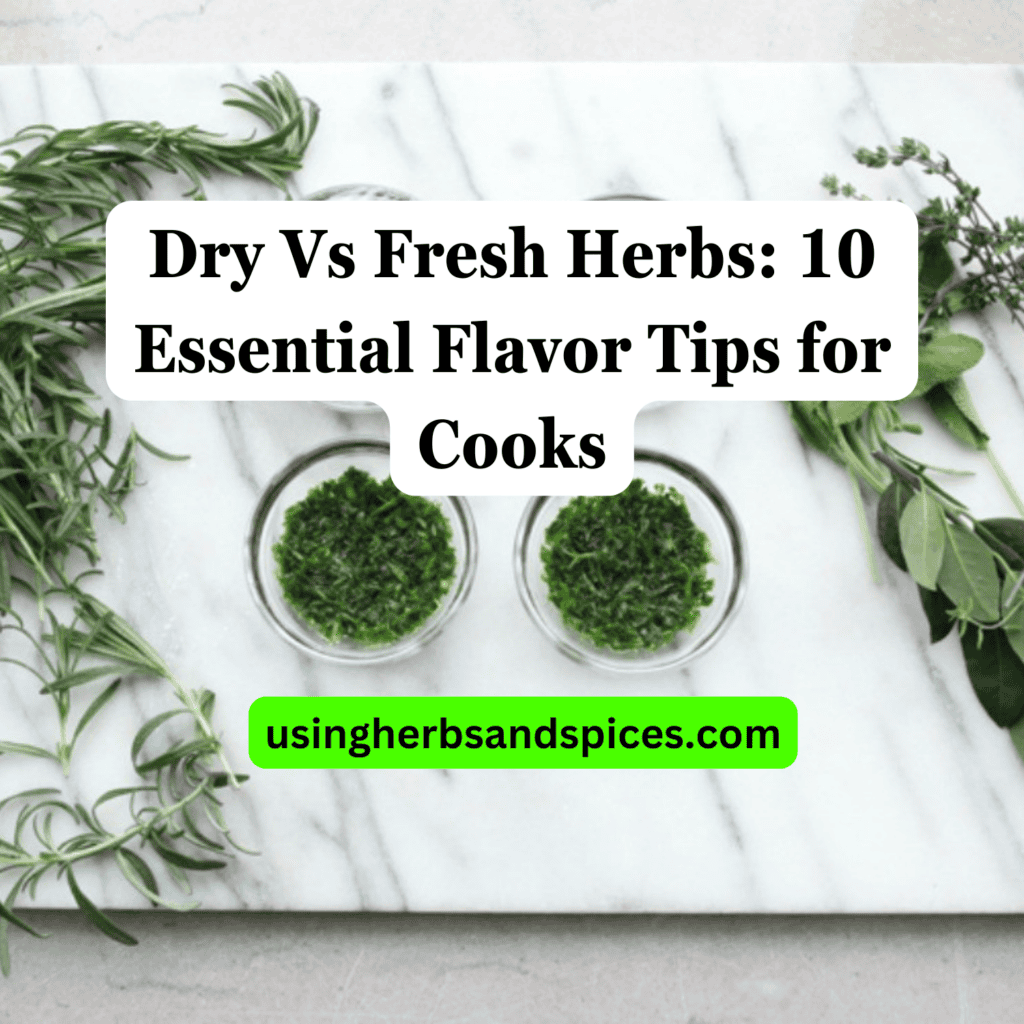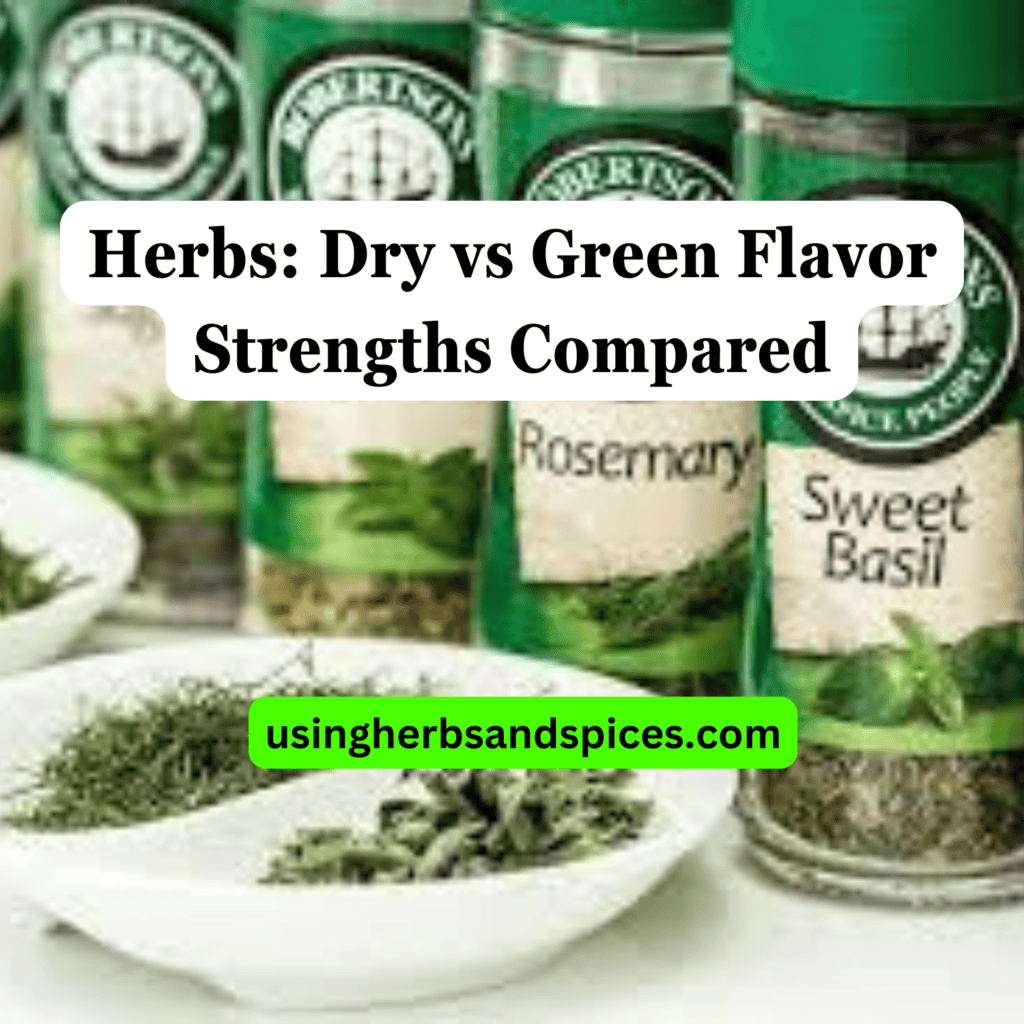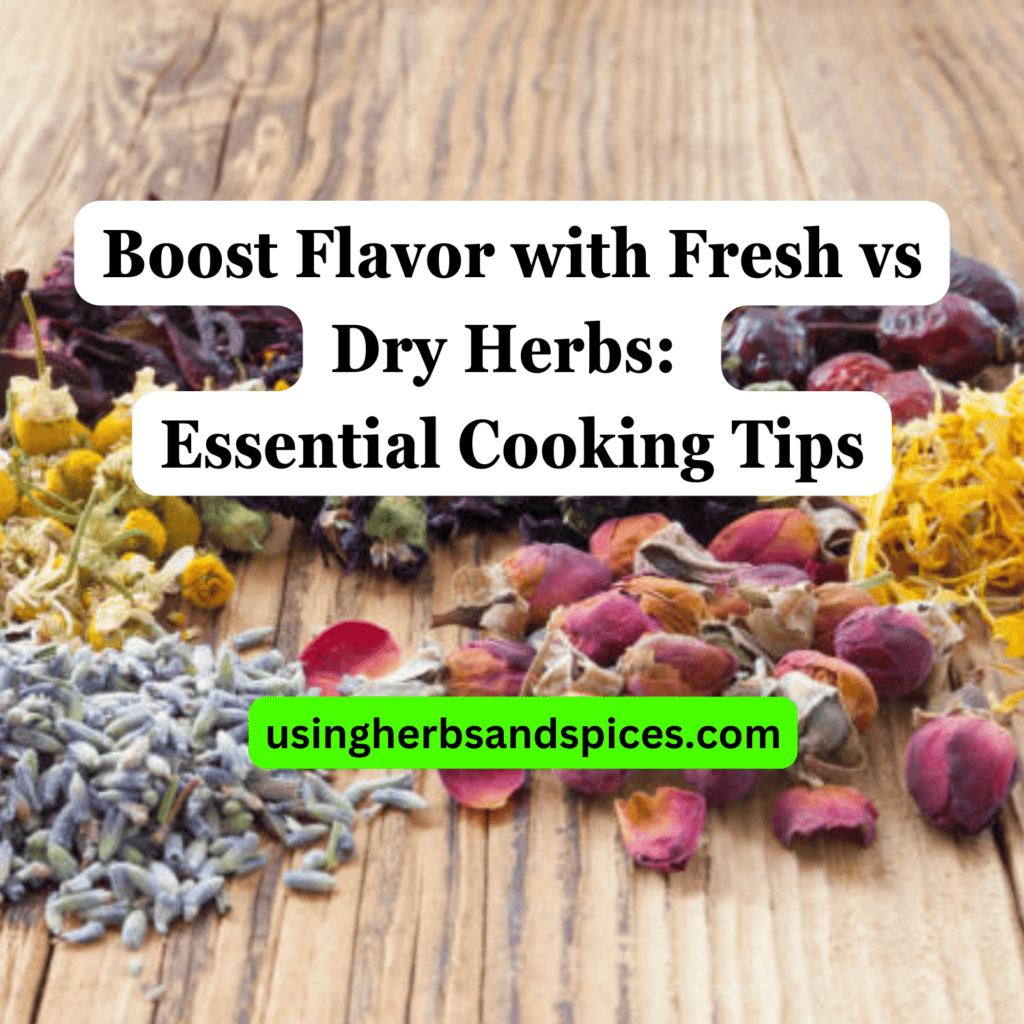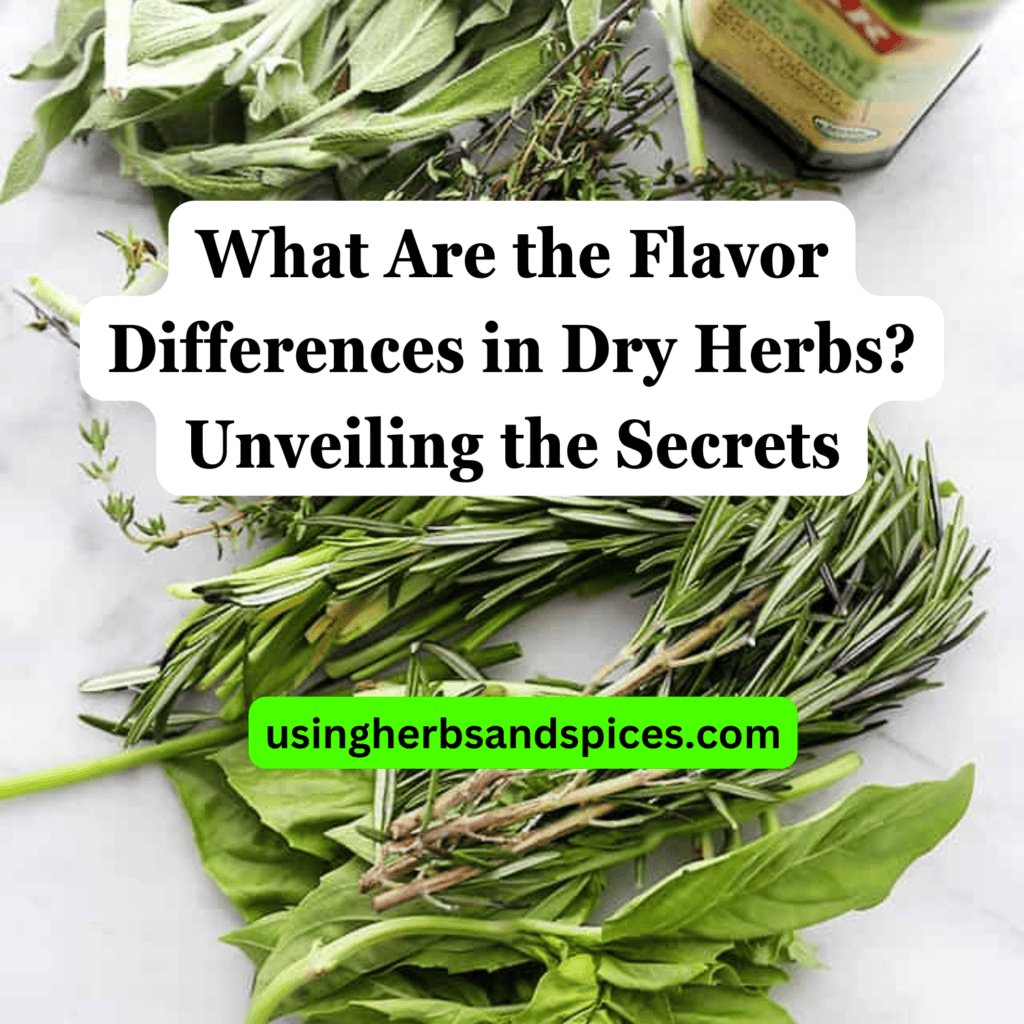SUMMARY: Choosing between dry and fresh herbs boils down to understanding their unique flavor impacts and knowing when each is best used in cooking. Dry herbs offer intensified flavors suitable for long-cooking dishes, whereas fresh herbs provide a burst of freshness ideal for finishing touches.
Ever felt confused about when to use dry herbs and when to opt for fresh?

This article is your ultimate guide to navigating these flavorful decisions.
- The essential differences between dry and fresh herb flavors
- Optimal scenarios for using dry herbs in your cooking
- Why fresh herbs can sometimes be the superior choice
- How to masterfully combine both for the perfect flavor balance
Continue reading to enhance your culinary skills with the confidence of making the right herb choices.
Understanding the Basics of Herb Flavors
The pivot between using dry versus fresh herbs starts with a grasp of their fundamental flavor profiles. Dried herbs, having been dehydrated, offer a concentrated flavor that’s oftentimes more potent than their fresh counterparts. This potency arises because drying out the herbs evaporates their water content, leaving behind a denser concentration of the oils that carry their distinctive flavors and aromas.
On the other hand, fresh herbs provide a brighter, more vibrant flavor that can bring a dish to life with just a sprinkle. Their moisture content contributes to a palpable freshness that’s hard to achieve with dried herbs. However, because they are less concentrated, you might find you need to use more fresh herbs than dried to achieve a similar level of flavor intensity in your cooking.
It’s critical to understand these differences, as they directly affect how and when you should use each type of herb to complement your cooking best and truly elevate your dishes.
When to Use Dry Herbs
Dry herbs are a staple in many kitchens for good reasons. They’re concentrated in flavor, which makes them ideal for seasoning dishes that cook for an extended period or require a bold taste profile. Stews, soups, and braised dishes benefit significantly from the gradual release of flavors that dry herbs offer. Additionally, when fresh herbs are out of season or not readily available, dry herbs present a convenient and cost-effective alternative.
It’s crucial to remember that due to their concentrated nature, dry herbs are typically more potent than their fresh counterparts. A general guideline is to use one-third the amount of dry herbs to fresh. This ratio ensures that the essence of the herb permeates the dish without overwhelming other ingredients. For recipes that call for marinating or longer cooking times, adding dry herbs early in the process allows their complex flavors to meld seamlessly with other components.
However, the timing of when to add dry herbs can vary depending on the dish. For those that cook quickly or at high temperatures, consider incorporating dry herbs later in the cooking process to preserve their aromatic qualities. This nuanced approach to seasoning with dry herbs can elevate the depth and richness of your culinary creations.
Embracing Fresh Herbs
There’s something irreplaceable about the zest fresh herbs bring to a dish. When it’s vibrant color and delicate fragrances you’re after, fresh herbs are unmatched. They’re particularly fitting in recipes that are served cold or require minimal cooking, such as salads, dressings, and garnishes. This is because heat can quickly diminish their brightness and lead to a loss of nuanced flavors that are only present when the herbs are fresh.
Incorporating fresh herbs towards the end of the cooking process, or using them as a garnish, preserves their essence and ensures that their fresh, aromatic qualities shine through. For dishes that simmer for hours on the stove, consider adding a final touch of fresh herbs to rejuvenate and lift the dish right before serving. This practice is common in Mediterranean and Asian cuisines, where fresh herbs are celebrated for their ability to complement and contrast richer flavors.
When choosing between dry and fresh, it’s important to consider the herb’s role within the dish. Fresh herbs, with their subtle yet complex flavors, are ideal when they’re meant to play a starring role, as in pesto, chimichurri, or fresh salsa. Here, their fresh characteristics can completely define the dish, bringing out a sense of vibrancy and freshness that dried herbs cannot muster.
Mastering the Balance: Mixing Dry and Fresh Herbs
Combining dry and fresh herbs in a single dish can be akin to orchestrating a symphony of flavors, where every note needs to harmonize with the others. This blend not only accentuates the flavor profile of your dish but also adds layers of complexity and depth. Understanding the strength and contribution of each type of herb is key to achieving the perfect balance.
The general rule of thumb is to use dry herbs during the cooking process to build a foundation of flavor, as they release their essence slowly over time. Fresh herbs, on the other hand, are best added towards the end of cooking or as a garnish to preserve their delicate flavors and vibrant color. This approach ensures that the freshness of the herb can shine through, complementing the deeper tones established by their dry counterparts.
When mixing dry and fresh herbs, consider their potency. Dry herbs, being more concentrated, require a sparing hand. A common ratio is 1:3, meaning one part dry to three parts fresh, adjusting as needed based on the herbs’ intensity and the desired outcome of your dish. For instance, a robust herb like rosemary may require less adjustment than a more delicate herb like basil.
Experimentation is encouraged as you learn how different herbs interact with each other and with the various components of your dish. Whether you’re aiming for a subtle enhancement or a bold statement, the judicious mixing of dry and fresh herbs can elevate your cooking from good to unforgettable.
Fresh vs. Dry for Optimal Flavor
Choosing between dry and fresh herbs is more than a matter of preference; it’s a decision that significantly influences the flavor and aroma of culinary creations.
- Dry herbs offer intensified flavors ideal for slow-cooking processes and dishes that need a powerful punch.
- Fresh herbs bring a burst of freshness and vibrant color, perfect for finishing dishes or enhancing light, quick meals.
- Understanding when and how to use each type of herb allows for optimal flavor combinations and culinary outcomes.
- Mixing dry and fresh herbs strategically can introduce a complex layer of flavors to any dish.
- Experimentation and creativity in using herbs can elevate the cooking experience and the resulting meals.
Armed with these insights, you’re now better equipped to navigate the aromatic world of herbs, making each culinary choice with confidence and creativity. Remember, the key to mastering the use of herbs lies in understanding their unique characteristics and how they complement different dishes. Happy cooking!
Dry Vs Fresh Herbs FAQs
Can you substitute dry herbs for fresh ones in recipes?
Yes, you can substitute dry herbs for fresh ones in recipes, but it’s essential to consider the difference in potency. Typically, one tablespoon of fresh herbs equals one teaspoon of dry herbs. Adjustments in timing during cooking might also be necessary, as dry herbs release their flavors over a longer period.
How do you store fresh and dry herbs to maintain their flavor?
Fresh herbs should be stored in the refrigerator, either wrapped loosely in a damp paper towel or standing upright in a glass of water. Dry herbs, on the other hand, should be kept in a cool, dark place in airtight containers. Proper storage is crucial to preserving the herbs’ flavor and aroma for as long as possible.
When is the best time to add dry vs. fresh herbs during cooking?
Dry herbs are best added during the early stages of cooking. Their concentrated flavors need time to soften and infuse the dish. Fresh herbs, however, are often added towards the end of the cooking process or as a garnish, as their flavors are more delicate and can be lost with prolonged heat.
Do dry and fresh herbs have the same health benefits?
Both dry and fresh herbs offer health benefits, including various vitamins, minerals, and antioxidants. However, the drying process may reduce the vitamin content in some herbs, while concentrating other nutrients. The choice between dry and fresh may slightly affect the health benefits, but using either contributes positively to your diet.









